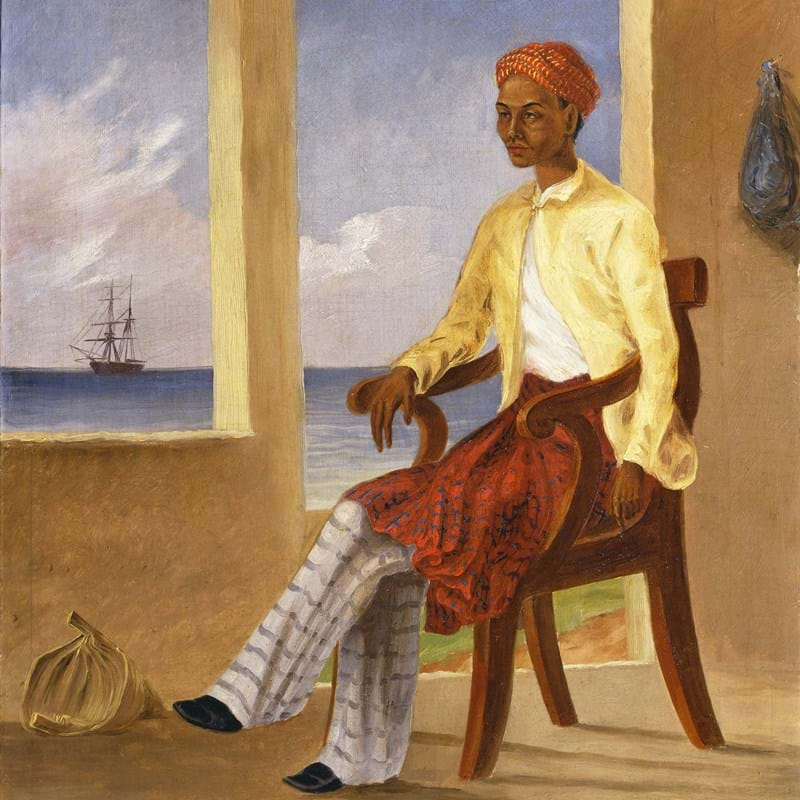Downloads

Hidden histories of exploration
The history of exploration has often invited celebration; after all, to travel into the unknown is easier said than done. But what, and whom, shall we celebrate?
The Hidden Histories research project looked at the hidden contributions of local guides and others in the history of Western exploration. An exhibition outlining the significant role these individuals played and the multicultural nature of historic expeditions drew hundreds of visitors, helping to improve public understanding around this topic.
Challenge
In an increasingly multi-cultural society, integration can be fostered by finding ways for people of different backgrounds to gain a better understanding of their shared histories and backgrounds. Research on the histories of Western exploration using the archival collections of the Royal Geographical Society (with IBG) and involving community groups during the research phase, challenged the public perception that UK exploration involved ‘tales of courageous solo (Western) explorers’.
Solution
The Hidden Histories project, funded by the Arts and Humanities Research Council (AHRC) and led by Professor Felix Driver and his co-researcher Dr Lowri Jones (Royal Holloway University of London), allowed a ‘fresh look’ at the ‘hidden’ contributions of local guides, interpreters and other intermediaries in the history of Western exploration. Through exploring the archives for evidence about local people who were involved at the time, such as names on photographs or sentences in a diary and by piecing together these contributions, it was found that these individuals played a significant role in the success of expeditions, which were genuinely multicultural.
During the research, Professor Driver and Dr Jones collaborated with local community groups from a range of cultural backgrounds to gain new perspectives on the archival materials and interpretations being developed, and to shape the exhibition itself. After the exhibition was launched, a series of ‘showcase’ events enabled the viewing of additional archival materials and more in-depth discussion about issues raised by the research.
Benefits
Raising awareness and improving understanding
The main output and impact of the archival research project was the creation of a major free exhibition, Hidden Histories of Exploration, featuring a range of paintings, books, photographs, artefacts and manuscripts from the Royal Geographical Society (with IBG)’s Collections. More than 3,600 people visited the exhibition in London, and more than 6,600 more visited while it toured the UK.
The exhibition was accompanied by a website, allowing visitors to read accounts or view images, which received more than 70,000 page views between 2009 and 2013 and nearly half of the visitors from outside the UK. A book of exhibition images was also published, Hidden Histories of Exploration: Researching the RGS-IBG Collections (Driver and Jones, 2009).
A set of teaching resources were developed to embed the research findings into school curricula (lesson plans, slide presentations, factsheets, podcasts and film clips). Resources for geography teachers focused on the theme of ‘Exploring Everest’, addressing GCSE specifications on extreme environments. Resources for history teachers focused on ‘Exploring Africa’, addressing the GCSE specifications on the history of the British Empire. Hosted on the RGS-IBG website, the teaching resources section receives more than 40,000 hits per month.
In the wider media, several UK newspapers published articles on the exhibition, reaching potential public audiences of more than one and a half million people, and discussion of the topics and issues raised by the exhibition featured on dozens of individual websites and blogs. For those interested in learning in more depth about the exhibition’s findings, ‘showcase’ events were held to foster more in-depth discussion and the opportunity to view additional items from the Society’s Collections.
Better decisions
The project enhanced the curation and understanding of the Society’s Collections, and contributed a new research-oriented model for re-appraising under-used parts of the Collections (notably film). It also enhanced interaction between RGS-IBG divisions responsible for Collections, research and public engagement.
Following the success of the project, the Society has developed its programme of collections-based research, including Collaborative Doctoral Awards, funded by AHRC. The underpinning research has also helped to embed collaborative research and geographical approaches within the ongoing curatorial practice of multiple institutions.
Further reading
-
Hidden Histories of Exploration: Researching the RGS-IBG Collections; book accompanying the exhibition (Driver and Jones, 2009).
-
The Arts and Humanities Research Council (AHRC) recognised the research and exhibition as a lead ‘case study’ in its 2009-10 annual report to Parliament.
This case study was originally published by the Society in 2013 and was updated in 2023.
Share this case study
This is an open access article under the terms of the Creative Commons Attribution License (CC BY NC 4.0), which permits use, adaptation, distribution and reproduction in any medium or format, provided the original work is cited and it is for non-commercial purposes. Please contact us for other uses.
How to cite
Royal Geographical Society (with IBG) (2019) New perspectives on historical accounts of exploration. Case study. [online] Available at: https://rgs.org/hiddenhistories Last accessed on: <date>
